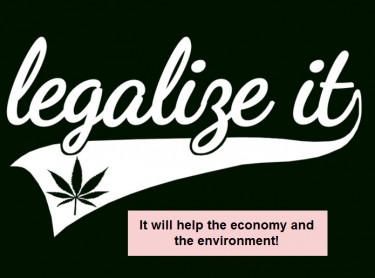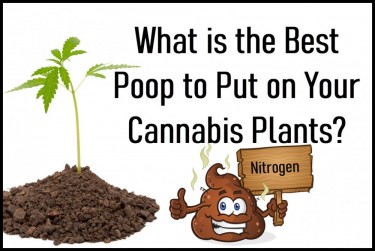Cannabis News
The Marijuana Misinformation Machine – How Politicians Plan to Block Cannabis Legalization
Published
6 months agoon
By
admin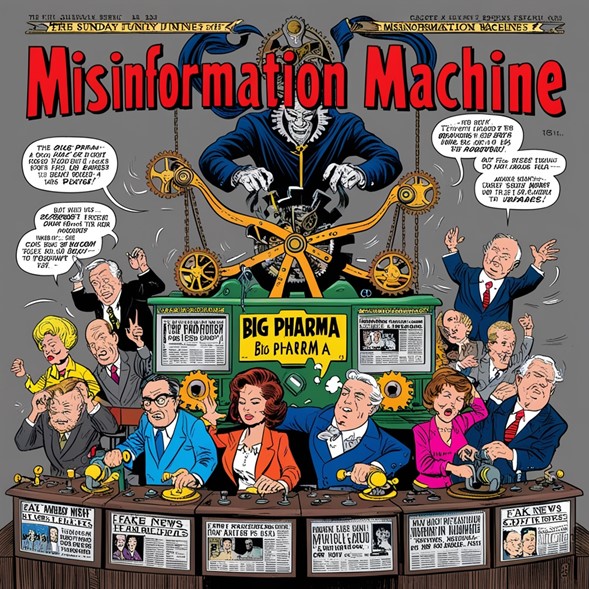
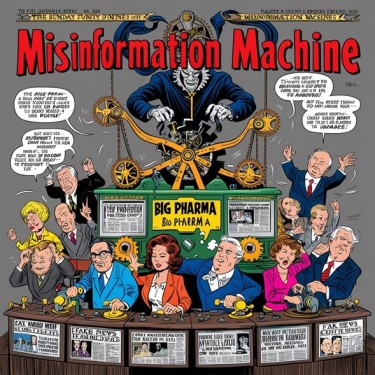
In recent years, we’ve heard politicians clamoring about the dangers of “misinformation” and “disinformation,” with some even calling for regulations on free speech. But these same politicians seem to have a glaring blind spot when it comes to their own history of spreading falsehoods, particularly regarding cannabis.
For over a century, the U.S. government has been the primary purveyor of marijuana misinformation, running smear campaigns that have shaped public perception and policy. From outlandish claims about cannabis-induced insanity in the 1920s to Nixon’s war on drugs in the 1970s, official channels have consistently peddled propaganda over facts.
The irony is palpable. While decrying the spread of misinformation in the digital age, many politicians conveniently ignore the government’s long-standing role as the chief architect of cannabis myths and misconceptions.
Today, we’re diving into this rich history of government-sponsored cannabis disinformation and examining recent findings from the National Institutes of Health (NIH) that reveal a telling trend: Americans don’t trust official sources when it comes to marijuana information.
As we peel back the layers of propaganda and explore the roots of public mistrust, we’ll see how the government’s own actions have undermined its credibility on this issue. The marijuana misinformation machine has been running for decades, and it’s time to set the record straight.
So buckle up, dear readers. We’re about to embark on a journey through the smoky haze of cannabis history, separating fact from fiction and exposing the hypocrisy at the heart of the war on drugs. Let’s dive in!
In an era where information is at our fingertips, it’s ironic that when it comes to cannabis, Americans are turning away from traditional sources of medical knowledge. A recent study published in the Journal of Cannabis Research, partially funded by the National Institute on Drug Abuse, has shed light on this phenomenon, revealing a startling lack of trust in government and medical sources for cannabis information.
The study, which surveyed 1,161 adults nationwide, found that only 4.7% of respondents relied on government agencies for cannabis-related information. Even more surprisingly, health and medical care providers fared only slightly better at 9.3%. Instead, the majority of people turn to friends and family (35.6%) or websites (33.7%) for their cannabis knowledge.
This mistrust isn’t unfounded. For decades, the U.S. government has been the primary purveyor of cannabis misinformation, running smear campaigns that have shaped public perception and policy. This propaganda has not only affected the general public but has also seeped into medical education, creating a knowledge gap among healthcare providers.
The study highlights this medical ignorance, noting that only 9% of medical schools in 2016 offered cannabis-specific curricula. This lack of education isn’t necessarily the fault of individual healthcare providers, but rather a systemic issue rooted in years of government-sponsored misinformation. Many medical professionals simply haven’t had the opportunity to update their “firmware” on the subject matter.
As cannabis use continues to rise and legalization spreads across the country, it’s clear that the medical community needs to catch up. The study authors emphasize the “strong need for better clinician education, public outreach strategies, and improved communication between patients and clinicians about cannabis.”
However, addressing this knowledge gap isn’t as simple as updating medical textbooks. A separate study published in PeerJ Life & Environment reveals a troubling trend in biomedical education materials. The study found that many authors of influential medical textbooks have undisclosed financial conflicts of interest, including patents and compensation from pharmaceutical companies.
This ethical conflict of interest raises questions about the objectivity of medical education materials, particularly when it comes to topics like cannabis that could potentially threaten pharmaceutical profits. As we push for better cannabis education in medical schools, we must also address these underlying conflicts of interest to ensure that future healthcare providers receive unbiased, evidence-based information.
The age of mistrust in official sources of cannabis information presents both challenges and opportunities. While it’s concerning that so few people turn to medical professionals for guidance, it also highlights the need for a major overhaul in how we educate both the public and healthcare providers about cannabis.
As we move forward, it’s crucial that we address the legacy of misinformation, update medical curricula, and ensure transparency in medical education materials. Only then can we hope to bridge the trust gap and provide accurate, unbiased information about cannabis to those who need it most.
The prohibition of cannabis in the United States is a tale woven with threads of deception, racism, and political manipulation. From its inception, the campaign against marijuana has relied on sensationalism and outright lies to justify its existence.
As NORML points out, the initial push for cannabis criminalization had little to do with public health or safety. Instead, it was fueled by xenophobia and racist rhetoric. A prime example is a 1927 New York Times story headlined “Mexican Family Goes Insane,” which farcically claimed that a widow and her children were driven insane by eating the “marihuana plant.” Such sensationalist reporting was common, with a 1933 academic paper in The Journal of Law and Criminology asserting that marijuana use inevitably resulted in “incurable” insanity and death.
At the forefront of this misinformation campaign was Harry J. Anslinger, America’s first “Drug Czar.” Anslinger successfully lobbied Congress to ban cannabis nationwide in 1937, relying heavily on racist rhetoric. He claimed, “There are 100,000 total marijuana smokers in the U.S., and most are Negroes, Hispanics, Filipinos, and entertainers.” He even went so far as to assert that marijuana caused “white women to seek sexual relations with Negroes, entertainers, and any others.”
The weaponization of cannabis misinformation reached new heights during the Nixon administration. Despite privately acknowledging that cannabis wasn’t “particularly dangerous,” Nixon and his team publicly doubled down on the supposed marijuana threat for political gain. John Ehrlichman, Nixon’s domestic policy chief, later admitted the true motives behind their actions: “We couldn’t make it illegal to be either against the (Vietnam) war or Black, but by getting the public to associate the hippies with marijuana and Blacks with heroin… we could disrupt those communities.”
This legacy of lies continued well into the late 20th century with programs like D.A.R.E. (Drug Abuse Resistance Education), which perpetuated exaggerated claims about marijuana. The “lazy stoner” stereotype, heavily promoted by these campaigns, has been debunked by recent studies showing that cannabis users tend to be more active than their non-using counterparts.
Given this extensive history of deception, is it any wonder that people don’t trust the government on cannabis-related information? The federal government didn’t just create fake studies; they actively stonewalled legitimate research to sustain a policy founded on lies and misinformation. This deliberate suppression of scientific inquiry has had far-reaching consequences, hindering our understanding of cannabis and its potential benefits for decades.
The damage caused by this misinformation campaign extends beyond public perception. It has shaped policy, driven mass incarceration, and stifled potentially life-changing medical research. The classification of cannabis as a Schedule I substance, alongside drugs like heroin, flies in the face of scientific evidence and has been a major obstacle to comprehensive study.
This is why simply rescheduling cannabis is not enough. What we need is a complete dismantling of the Controlled Substances Act (CSA). We need an independent, unbiased group to research these substances without the weight of decades of political baggage. It’s time to rethink our approach as a society to drug consumption and remove the regulatory hurdles that have long impeded research and product development.
The path forward requires more than just correcting misinformation; it demands a fundamental shift in how we approach drug policy. We must acknowledge the racist and politically motivated roots of cannabis prohibition and work to undo the harm caused by decades of lies. Only then can we hope to develop a rational, evidence-based approach to cannabis that prioritizes public health, individual liberty, and scientific truth over political agendas and corporate interests.
As we move into a new era of cannabis policy, let’s learn from the mistakes of the past. It’s time to replace fear-mongering with facts, propaganda with peer-reviewed research, and prohibition with sensible regulation. The history of cannabis prohibition in America is indeed a history of lies – but it doesn’t have to be our future.
After more than half a century of lies, misinformation, and propaganda, the U.S. government and healthcare establishment face a monumental task: regaining the public’s trust on cannabis and drug policy. But here’s the harsh truth – they can’t. At least, not without radical, systemic change.
The problem runs deep. How can we trust pharma-sponsored studies when there’s an obvious conflict of interest? How can we believe government agencies that have consistently prioritized political agendas over scientific truth? The credibility well has run dry, and refilling it will require more than just a change in rhetoric or policy tweaks.
The only path forward is a complete overhaul of our approach to drugs in America. This means dismantling the Controlled Substances Act (CSA) and renegotiating how we produce, distribute, and regulate drugs in the U.S. Until we take this drastic step, public trust in government agencies and healthcare providers on these issues will remain – justifiably – at rock bottom.
We need to create a new system built on transparency, scientific integrity, and genuine concern for public health. This means severing the ties between drug policy and corporate interests, political agendas, and law enforcement quotas. It means funding independent research, free from the influence of pharmaceutical companies or government agencies with a vested interest in maintaining the status quo.
Let’s be clear: you can’t trust a politician who takes money from Big Pharma or law enforcement unions to make unbiased decisions about drug legalization. That’s like trusting an obese person’s advice on losing weight – the conflict of interest is too glaring to ignore.
Moving forward, we need to demand full transparency in medical education, research funding, and policy-making. We need to elevate voices that have been historically marginalized in these discussions, including those of cannabis users, medical patients, and communities disproportionately affected by the war on drugs.
The road to rebuilding trust will be long and challenging. But it starts with acknowledging past wrongs, committing to radical change, and putting the wellbeing of individuals and communities above political and corporate interests. Only then can we hope to create a drug policy that truly serves the American people.
SOURCES:
MISINFORMATION IN YOUR FEED, YOU BET, READ ON…
You may like
-


Karma Koala Podcast 247: Speaking with Dr. Natalie Corthésy senior lecturer university of West Indies & Enrico Bonadio professor of law City St George’s University of London about their forthcoming Edward Elgar title, “Intellectual Property and Cannabis”
-


MJBizCon offers speakers chance to share cannabis insights, shape industry
-


The Best Tariff Friendly Cocktails
-


Cannabis Consumers Are Being Hit By The Tariffs
-


The Best Tips To Update Your Wardrobe
-


Former New York Knick Iman Shumpert debuts ‘TSA Approved’ legal cannabis brand
Cannabis News
Scientists Now Think That One Compound in the Cannabis Plant Can Replace All Opiates
Published
1 day agoon
April 3, 2025By
admin

Which Cannabis Compound Do Scientists Think Can Replace Opiates?
…And Why This Is Important
Opiates are a type of pharmaceutical drug that’s been made from the opium poppy plant. While it’s somewhat a ‘natural’ substance that’s been extracted from the fibers and sap of the opium poppy plant, these are extremely dangerous sedatives that act on the central nervous system. However, there are completely synthetic opioids as well, which are manufactured entirely in laboratories.
Famous examples of well-known and widely-used opiates today include heroin, codeine, and morphine. They all work similarly, binding to the brain’s opioid receptors and users feel a drastic reduction in pain. It also causes users to feel euphoric, drowsy, or sleepy. Common side effects include constipation and nausea.
Because opiates are powerful for dulling one’s pain perceptions, they have become commonly prescribed by doctors and hospitals for pain relief. That said, opiates have become one of the world’s most addictive, dangerous, and fatal drugs – and you can get prescribed it right by your very own physician. Repeated use of opiates can easily lead to dependence and addiction, and eventually consuming high doses can drastically slow down breathing, and cause brain damage, or even death.
Since doctors still keep prescribing opioids, this has resulted in the deadly Opioid Epidemic, which has killed thousands of people. It’s a worrisome public health crisis, most especially because of fentanyl, an illegally manufactured opioid which is said to be 50 times more potent than heroin.
Could The Answer To The Opioid Epidemic Lie In Cannabis…Terpenes?
The past few years have shown that cannabis legalization is critical for surviving the opioid epidemic, and reducing overall opioid consumption.
The results of a recent research paper, which builds on past studies conducted by Dr. John Streicher, who is a member of the Comprehensive Center for Pain and Addiction, reveals fascinating findings. According to Streicher, cannabis terpenes were found to provide relief in inflammation models as well as on neuropathic pain caused by chemotherapy.
For the study, Streicher and his research team analyzed 4 kinds of terpenes that are found in mid to high levels in Cannabis sativa plants: linalool, geraniol, beta-caryophyllene, and alpha-humulene. They discovered that each terpene produced significant pain relief among mice subjects with fibromyalgia and post-operative pain, and among the terpenes, geraniol was found to be the most powerful.
“Our research is showing that terpenes are not a good option for reducing acute pain resulting from an injury, such as stubbing your toe or touching a hot stove; however, we are seeing significant reductions in pain when terpenes are used for chronic or pathological pain,” he said. “This study was the first to investigate the impact of terpenes in preclinical models of fibromyalgia and post-operative pain and expand the scope of potential pain-relieving treatments using terpenes,” Streicher said.
Cannabis terpenes are the compounds responsible for the aromatic profile of each strain; they are located in the plant trichomes. Not only do they contribute to each strain’s unique flavor and odor, but they also have valuable therapeutic and medicinal benefits. There are around 150 kinds of terpenes known today, though in the entire plant world, there are known to be some 20,000 terpenes.
Understanding the therapeutic benefits of terpenes is incredibly valuable also because they don’t contain THC (tetrahydrocannabinol), the compound in marijuana that gets you high.
“With fibromyalgia, there isn’t much of an understanding of what the pain state is, and there are not a lot of great options for treating it,” explains Streicher. “Our findings show that terpenes may be a viable treatment option for fibromyalgia pain, which could potentially have a large impact and make a difference for an under-treated population.”
Other Studies
This is not the first time that cannabis terpenes have been found to demonstrate excellent pain-relieving properties. It must be noted that just like what Streicher says, terpenes seem to do better with chronic pain management, instead of acute pain management.
Another study from 2024, which was published in The Journal of the Association for the Study of Pain, was conducted by researchers at the University of Arizona and the National Institutes of Health. The investigators analyzed the analgesic properties of different terpenes including geraniol, humulene, linalool, pinene, and caryophyllene among mice subjects with chemotherapy-induced peripheral neuropathy.
According to the researchers, all the terpenes delivered analgesic effects that were equivalent to around 10 mg/kg of morphine. It was also interesting to note that administering both morphine and terpenes together at low doses resulted in ‘enhanced’ pain-killing effects.
“Together these studies identify cannabis terpenes as potential therapeutics for chronic neuropathic pain,” said the investigators.
There have also been other studies that have found that combining cannabis with opioids can indeed provide long-lasting pain relief. It comes with the added benefit of reducing opioid doses needed for effective pain control. This phenomenon is called opioid-sparing. These types of protocols can be beneficial for patients who suffer from severe, chronic pain caused by cancer, arthritis, joint problems, fibromyalgia, diabetes, post-surgical pain, migraines, nerve damage, and so much more.
Conclusion
Learning more about the pain-killing properties of terpenes is extremely valuable for the medical community, patients, and even society as a whole. We can all do with less opioid addictions because it has torn families apart, and caused the deaths of thousands of people.
Terpenes, or cannabis in general, offer a natural and safe alternative that can be complementary to other pharmaceutical treatments designed to reduce pain.
SWAPPNG OPIOIDS FOR CANNABIS, READ ON…
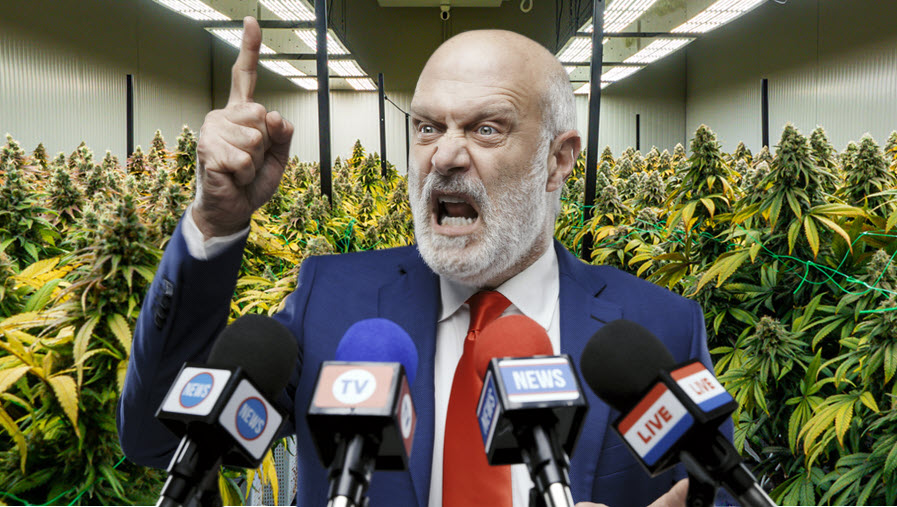

Cannabis and the Authoritarian State
Cannabis has been legal for longer than it has been illegal. Let that sink in for a minute. For thousands of years, humans cultivated and consumed cannabis freely across civilizations and continents. It wasn’t until the early 1900s that we witnessed a massive push to drive hemp and cannabis into the black market, primarily due to industrial competition from petrochemicals, pharmaceuticals, and other industrial applications.
What makes cannabis so threatening to powerful interests? For starters, hemp and cannabis are highly versatile crops with over 50,000 different uses, from medicine to textiles to fuel. Even more remarkable is how this plant is hardwired to work with the human body through our endocannabinoid system—a biological network we didn’t even discover until the 1990s.
Perhaps most threatening of all is that cannabis is insanely easy to grow. This means that if the plant helps you with a particular physical ailment, you have the ability to grow your own medicine indefinitely. No insurance premiums, no wait lists, no pharmaceutical middlemen—just you cultivating your own healing directly from the earth.
Authoritarians do not like this, not one bit. When people can meet their own needs independently, power structures lose their grip. When citizens can think differently without permission, control systems begin to fail. So today, we’re going to look at the interesting relationship between authoritarianism and cannabis, and how this humble plant plays a key role in keeping you free.
We’ve already established the versatility of cannabis, but there’s another element that those old D.A.R.E. PSAs inadvertently reveal about what authoritarians think about cannabis. I’m talking, of course, about “behavior.” You see, in an authoritarian system, you and I are but cogs in the machine. We’re the expendables who should be proud to work ourselves to death for our “fearless leaders.”
This is precisely why certain ideas, philosophies, religions, movements, books, and substances are typically banned in authoritarian regimes. Take North Korea as an example: everything from the type of television citizens watch to the music they hear is a tightly spun spell designed to keep the populace in check. While they don’t have explicit laws against hemp (they actually grow it industrially), smoking psychoactive cannabis is strictly forbidden.
Contrast this with places like Malaysia, where you can get up to 5 years for possessing just 20 grams of cannabis, and even face the death penalty depending on the situation. These authoritarians don’t play around when it comes to cannabis because they know it affects the behavior of their populace in ways they can’t control.
The question becomes: what behavior do they fear so much that cannabis produces within the individual?
The answer is a critical mind. People who consume cannabis often begin to question their own belief systems. Most regular users undergo some transformation in their values and perspectives. Cannabis has a unique way of helping people see beyond cultural programming and think outside established paradigms. It can make the familiar strange and the strange familiar—a psychological state that’s antithetical to authoritarian control.
This independent thinking runs counter to the narrative of authoritarians who wish to maintain a tight grip on social consciousness. If even 10% of a population begins to pivot in their behavior within a regime, it can have massive ripple effects. Just look at cannabis in the US—it went from being demonized to being embraced by the majority in less than 80 years, despite massive propaganda efforts.
For authoritarians, psychoactive cannabis isn’t primarily a threat to public health and wellbeing—it’s a threat to the health and wellbeing of authoritarianism itself. When people start thinking differently, they start living differently. When they start living differently, they start demanding different. And that’s the beginning of the end for any system built on unquestioning obedience.
Beyond the threat to thought control, there’s another reason why drugs in general remain illegal: the state can use prohibition as a weapon against the populace. This isn’t conspiracy theory—it’s documented history.
Take Nixon’s war on drugs. His domestic policy chief, John Ehrlichman, later admitted: “We knew we couldn’t make it illegal to be either against the war or black, but by getting the public to associate the hippies with marijuana and blacks with heroin, and then criminalizing both heavily, we could disrupt those communities.” Nixon essentially placed cannabis on the Controlled Substances Act because he needed an excuse to shut down anti-war protests and target Black communities.
Since hippies and anti-war protesters were smoking “freedom grass,” making it illegal would circumvent their freedom of speech and freedom of assembly, and more importantly—turn free citizens into state property. It’s a win-win if you’re an authoritarian looking to silence dissent.
Then there’s the whole “boogeyman” complex that prohibition creates. We’re told “drug dealers” are roaming the streets preying on innocents, giving them “marihuanas” so they can do vile things. What the government conveniently leaves out is how the banks these “dealers” use to launder their money remain untouched. They don’t mention the shadier dealings of law enforcement either—like running guns into Mexico (eventually leading to the death of one of their own), or spraying poison on crops, killing and hospitalizing people because, you know…”Drugs are bad!”
Authoritarians cannot let go of the value that keeping the most widely used illicit substance in the world illegal provides them. This explains why the US hasn’t federally legalized cannabis despite nearly 80% of Americans supporting some form of legalization. It’s not because they don’t have enough research or that they’re genuinely concerned about public health—it’s because prohibition gives them all the privileges of violating constitutional rights while siphoning money into their coffers.
Drug prohibition creates a perpetual enemy that can never be defeated, allowing endless justification for surveillance, militarized police, asset forfeiture, and expansion of state power. What authoritarian could resist such a convenient tool?
Cannabis is a plant. You can’t make nature illegal—it’s counter to the human experience. When governments attempt to criminalize a naturally occurring organism that humans have cultivated and used for thousands of years, they reveal the absurdity of their position and the limits of their authority.
While the United States isn’t a full-on authoritarian state (yet), the truth is that many authoritarian elements have played out over the years. You only need to look as far as the war on drugs to see how the state utilizes prohibition as a weapon to their advantage. From no-knock raids to civil asset forfeiture to mass incarceration, drug laws have erected a parallel legal system where constitutional protections often don’t apply.
The fundamental truth is that cannabis is not only versatile and medicinal, it gives you back your autonomy in multiple ways. It helps you think for yourself. It allows you to grow your own medicine. It connects you with a plant that humans have used ceremonially, medicinally, and industrially throughout our history. And this autonomy is something authoritarians cannot stand—free individuals who know how to think beyond the narratives they’re fed.
Cannabis doesn’t just get you high—it offers a perspective from which the absurdities of prohibition become glaringly obvious. Perhaps this is why, as state after state legalizes, we’re witnessing the slow but steady unraveling of one of the most enduring authoritarian policies in American history.
So if you count yourself among those who value freedom of thought and bodily autonomy, who believe that nature doesn’t require government permission, and who understand that true liberty includes the right to explore your own consciousness—well, maybe it’s time to toke one up for freedom!
LEGALIZING CANNABIS IS NOT ENOUGH, READ ON..
Cannabis News
Stop Using Bat Poop to Fertilize Your Weed Plants Immediately, Here is Why…
Published
3 days agoon
April 1, 2025By
admin

Don’t Fertilize Your Weed with Bat Poop
Fertilization is a critical step for growing healthy marijuana plants.
They help provide essential nutrients for marijuana in various stages of growth, while promoting plant growth. There are dozens of different fertilizers to choose from in the market; growers can choose based on budget, nutrients needed, location, season, and much more. But not all fertilizers are made equally – of course, some are of better quality than others.
That said, there are some rather unusual fertilizers that can be used on plants. These may include, but are not limited to: coffee, milk, grass clippings, banana peels, fish tank water, potato water, and even urine! Yes, it does sound strange, but to gardening enthusiasts, there is nutritional value to be found in each of these things, which can make them suitable fertilizers depending on the circumstances.
For example, grass clippings make excellent mulch and can provide potassium, nitrogen, and phosphorus. Urine is a potent source of nitrogen as well as phosphorus. Banana peels are rich in calcium, which is excellent for promoting root growth while helping supply oxygen to the soil.
But what about bat poop? Also known as guano, bat poop has been said to work as a plant fertilizer because it’s rich in nitrogen, potassium, phosphorus, and other nutrients. Unfortunately, using bat poop as a plant fertilizer can also be dangerous. So if you don’t really know what you are doing, bat poop as a fertilizer can be extremely risky.
Bat Poop Fertilizer Kills 2 NY Men
On December 2024, news of two men hailing from Rochester, New York, dying went viral.
The cause of death was dangerous fungus, in the bat poop that they were using to fertilize their marijuana plants. Both men grew their own marijuana plants for medical consumption, but unfortunately developed histoplasmosis after breathing toxic fungal spores from the guano.
One of the men was aged 59 years old; he bought bat poop online to use as fertilizer for his plants. Meanwhile, the other was a 64-year-old male who found guano in his attic, then decided to use it to fertilize his cannabis plants. They both developed similar symptoms, including chronic coughs, fever, severe weight loss, and respiratory failure. The case was also discussed in the Open Forum Infectious Diseases medical journal.
Is there a safe way to use bat poop as fertilizer? If you ask me, I truly can’t understand why one would use guano as fertilizer when there are so many other proven safe alternatives out there that are simply not as risky. According to the University of Washington, one must always wear a dust mask each time you open a bag containing soil amendments. That’s because a mask will greatly decrease the chances of breathing in fungal spores, which could be potentially dangerous. They also go on to explain that yes, guano is indeed used as fertilizer for its valuable nitrogen content but it still isn’t without its own risks, particularly of developing Histoplasma – the same condition that killed the two men.
Make Your Own Safe Fertilizers At Home
There are many other safe, affordable – and even free – fertilizers you can feed your marijuana plants with. It doesn’t have to cost a fortune nor does it have to be risky to your health.
Check out these easy, low-cost, DIY fertilizers for weed:
-
Coffee grounds are abundant in nitrogen, which makes it perfect for the vegetative stage of marijuana plants. They are also a fantastic source of organic materials and green waste, which contain other vital nutrients. When the coffee grounds decompose, they create soil aggregates that improve soil aeration and its water retention capabilities.
Mix around 2 grams of coffee ground for every liter of soil. Measuring its pH levels is also helpful, since you want it to be between 6 to 6.5
-
Crushed eggshells are a great way to ensure no eggshells go to waste. It’s rich in calcium plus other minerals that are effective in improving overall plant structure, health, and growth. In fact, so many gardeners and farmers commonly use crushed eggshells to help boost plant growth – and it will work just as well for marijuana plants.
They’re really easy to use, too! Just mix eggshells into the soil, or steep them into water then pour into the soil for a calcium-packed feed.
-
Banana tea or water is rich in potassium and magnesium, making it perfect as a feed during the marijuana plant’s flowering stage. You can use banana peels differently: with 3 to 5 banana peels, soak it in water for 2 days. Then you can use the water on your plants, and even leave the banana peels as compost for your garden.
-
Wood ash from your fireplace or other sources is a great source of phosphorus and potassium. Simply sprinkle some wood ash over marijuana during the final flower phase. Just use 1 or 2 grams of ash for every liter of substrate. Be careful not to use too much wood ash, or it can make the soil too alkaline.
-
Animal manure, such as those from cows, rabbits, or horses, make excellent organic fertilizers. Just be sure that they’re composed properly so that you avoid introducing weed seeds, or pathogens.
These low-cost fertilizers are also natural and effective. There’s no reason for you to turn to bat poop as fertilizer, even if you’re in a bind.
Conclusion
Guano or bat poop is a poor choice of fertilizer if you don’t know what you are doing. It’s risky and potentially dangerous – just not worth it. Instead, fertilize your marijuana plants with these options mentioned.
BEST POOP FOR CANNABIS PLANTS, KEEP READING…

Karma Koala Podcast 247: Speaking with Dr. Natalie Corthésy senior lecturer university of West Indies & Enrico Bonadio professor of law City St George’s University of London about their forthcoming Edward Elgar title, “Intellectual Property and Cannabis”

MJBizCon offers speakers chance to share cannabis insights, shape industry

The Best Tariff Friendly Cocktails

Cannabis Consumers Are Being Hit By The Tariffs

The Best Tips To Update Your Wardrobe

Former New York Knick Iman Shumpert debuts ‘TSA Approved’ legal cannabis brand

How New York pot pioneers made it to legal dispensary shelves

Scientists Now Think That One Compound in the Cannabis Plant Can Replace All Opiates

Vladimir Bautista is leading Happy Munkey’s legacy-to-legal takeover

Cannabis Can Help A Sore Throat

Distressed Cannabis Business Takeaways – Canna Law Blog™

United States: Alex Malyshev And Melinda Fellner Discuss The Intersection Of Tax And Cannabis In New Video Series – Part VI: Licensing (Video)

What you Need to Know

Drug Testing for Marijuana – The Joint Blog

NCIA Write About Their Equity Scholarship Program

It has been a wild news week – here’s how CBD and weed can help you relax

Cannabis, alcohol firm SNDL loses CA$372.4 million in 2022

A new April 20 cannabis contest includes a $40,000 purse

Your Go-To Source for Cannabis Logos and Designs

UArizona launches online cannabis compliance online course
Trending
-

 Cannabis News2 years ago
Cannabis News2 years agoDistressed Cannabis Business Takeaways – Canna Law Blog™
-

 One-Hit Wonders2 years ago
One-Hit Wonders2 years agoUnited States: Alex Malyshev And Melinda Fellner Discuss The Intersection Of Tax And Cannabis In New Video Series – Part VI: Licensing (Video)
-

 Cannabis 1012 years ago
Cannabis 1012 years agoWhat you Need to Know
-

 drug testing1 year ago
drug testing1 year agoDrug Testing for Marijuana – The Joint Blog
-

 Education2 years ago
Education2 years agoNCIA Write About Their Equity Scholarship Program
-

 Cannabis2 years ago
Cannabis2 years agoIt has been a wild news week – here’s how CBD and weed can help you relax
-

 Marijuana Business Daily2 years ago
Marijuana Business Daily2 years agoCannabis, alcohol firm SNDL loses CA$372.4 million in 2022
-

 California2 years ago
California2 years agoA new April 20 cannabis contest includes a $40,000 purse






